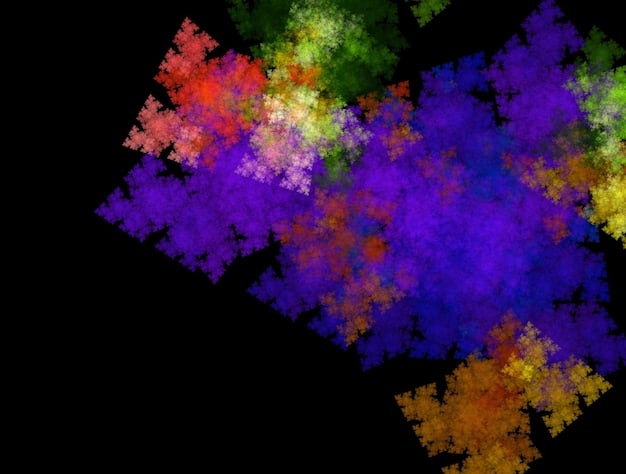Decoding the Enigma: Unraveling the Mysteries of

encompasses various interpretations—from its origins and meaning to its significance in different contexts, including its potential impact on storytelling and cultural understanding.
Have you ever stumbled upon the term and found yourself wondering what it truly means? From its historical roots to its modern-day usage, understanding its nuances can enrich your appreciation for language and storytelling. Let’s unravel the layers of this intriguing concept together.
The Genesis of : Tracking Its Origins
To fully grasp the essence of , it’s crucial to trace its origins. This exploration will shed light on how the term evolved and acquired its present-day significance.
Historical Context
The earliest usages of the concept can be found in ancient philosophical texts, where thinkers debated the nature of truth and interpretation. Understanding the historical backdrop is essential for grasping the current understanding of **.
Etymological Roots
The term’s etymology can be traced back to Latin and Greek words signifying concealment and revelation. By examining these linguistic roots, we can gain a deeper appreciation for the subtle variations in its meaning. Consider how context affects understanding of **.
- The role of linguistics in understanding nuances
- Examples of early philosophical debates on truth and interpretation
- How historical context shapes the term’s current significance
In conclusion, tracing the origins of ** reveals a rich tapestry of linguistic and philosophical influences. These historical and etymological roots provide a solid foundation for understanding its multifaceted nature.

Defining : What Does It Really Mean?
Defining isn’t as straightforward as it might seem. Its meaning is nuanced and can vary depending on the context. Here, we’ll explore the core elements that constitute its definition.
Core Elements
At its core,
refers to the process of uncovering hidden layers or meanings. This involves critical thinking and a willingness to look beyond the surface. Identifying the core elements of ** is crucial for understanding its application in various fields.
Nuances and Variations
The term’s meaning can shift depending on the situation. For example, in literature, it might refer to interpreting symbolism, while in psychology, it could involve understanding subconscious motives. Context is key to understanding the nuances of **.
- The importance of critical thinking in uncovering hidden meanings
- Examples of variations in meaning across different fields
- The role of context in understanding its application
In summary, defining ** requires an understanding of its core elements while acknowledging its contextual variations. This nuanced approach allows for a more comprehensive grasp of its meaning.
in Storytelling: Enhancing Narrative Depth
The application of in storytelling adds layers of depth and complexity to narratives. This exploration reveals how authors use it to enrich their tales and engage readers on a deeper level.
Symbolism and Allegory
Authors often use symbolism and allegory to imbue their stories with hidden meanings. These literary devices invite readers to look beyond the literal and uncover deeper thematic elements. Recognizing symbolism is crucial for discerning the ** within a narrative.
Character Development
Character arcs can be better understood by the act of
. By exploring a character’s motivations, readers can gain insights into their growth and transformation throughout the story. Deep character analysis relies on the principles of **.

Writers often weave it into their narratives to create suspense and keep audiences guessing. The anticipation of revelation adds intrigue and pulls readers deeper into the story’s world. The suspense generated by ** helps maintain audience engagement in storytelling.
- The use of symbolism and allegory to create deeper thematic elements
- The role of character development in revealing hidden motivations
- Techniques for generating suspense through narrative layering
In conclusion, the application of ** in storytelling enriches narratives by adding layers of symbolism, character depth, and suspense. These elements contribute to a more immersive and thought-provoking reading experience.
Psychological Context: Uncovering Subconscious Desires
In psychology, plays a crucial role in uncovering subconscious desires and motivations. This section explores how psychological theories use it to understand the human mind.
Psychoanalysis
Psychoanalysis, pioneered by Sigmund Freud, relies heavily on the study of dreams and unconscious thoughts. By interpreting these hidden messages, therapists help patients gain insight into their inner selves. Psychoanalysis is a prominent approach to understanding the psychological aspects of **.
Cognitive Psychology
Cognitive psychology examines how people process information and make decisions. Understanding cognitive biases and heuristics can reveal hidden factors that influence behavior. Cognitive biases highlight the importance of ** in comprehending behaviors.
Examining hidden anxieties and emotional vulnerabilities can lead to better mental health outcomes. By understanding the underlying causes of distress, individuals can work towards healing and growth. Emotional exploration requires the application of **.
- The role of psychoanalysis in interpreting dreams and unconscious thoughts
- How cognitive psychology reveals hidden factors influencing behavior
- The impact of emotional exploration on mental health outcomes
In summary, in a psychological context, it serves as a tool for understanding the complexities of the human mind. Through psychoanalysis, cognitive psychology, and emotional exploration, it enables deeper self-awareness and personal growth.
Cultural Significance: Interpreting Societal Norms
The study of also sheds light on cultural norms and societal values. This section explores how it is used to understand the hidden messages embedded in cultural practices.
Cultural Anthropology
Cultural anthropology explores the beliefs, customs, and behaviors of different societies. By studying cultural artifacts and rituals, anthropologists can uncover hidden meanings and understand the values that shape these practices. Cultural anthropology reveals deep insights into the nature of **.
Social Norms
Social norms are often unspoken rules that govern behavior within a society. Understanding these norms can reveal hidden power structures and social expectations. Decoding social norms requires recognizing the principles of **.
Symbols and metaphors used in art, music, and literature can reflect the underlying cultural narrative. By interpreting these artistic expressions, one can gain insight into collective beliefs and values. Art and culture reflect the importance of ** to better comprehend society.
- The role of cultural anthropology in understanding societal values
- How social norms reveal hidden power structures
- The use of symbols and metaphors to reflect collective beliefs
In conclusion, studying ** in a cultural context is essential for understanding societal norms and values. Through cultural anthropology, awareness of social norms, and interpretation of artistic expressions, it provides a deeper insight into the dynamics of cultural identity and social relations.
Potential Misinterpretations: Avoiding Common Pitfalls
While can provide valuable insights, it’s important to be aware of potential misinterpretations. This section outlines common pitfalls to avoid when engaging with its concept.
Confirmation Bias
Confirmation bias occurs when people seek out information that confirms their existing beliefs. This can lead to misinterpretations if individuals ignore contradictory evidence. To avoid confirmation bias, remain open to diverse perspectives when studying **.
Overthinking
Overthinking can lead to unnecessary complexity and inaccurate conclusions. It’s important to strike a balance between critical analysis and straightforward understanding. Analysis should be grounded in evidence to avoid overthinking in **.
Assuming hidden messages without tangible evidence can lead to flawed analysis. Conclusions should be based on concrete facts and logical reasoning. Evidence-based interpretation is important when exploring **.
- The dangers of confirmation bias and how to avoid it
- Strategies for avoiding overthinking and maintaining clarity
- The importance of evidence-based interpretation
In summary, being aware of potential misinterpretations is crucial for accurate analysis. By avoiding confirmation bias, preventing overthinking, and relying on evidence-based interpretation, you can maintain objectivity and ensure valid conclusions are drawn when dealing with **.
Future Trends: Adaptations in a Digital Era
As technology advances, the concept of is adapting to the digital era. This section highlights emerging trends and how they are reshaping its influence.
Algorithms and AI
Algorithms and AI are increasingly used to analyze vast amounts of data and uncover patterns that might be hidden from human observers. Understanding these digital tools enhances the act of in the modern age. The importance of algorithms and AI is the use of **.
Social Media
Social media platforms are fertile ground for
, as users often construct carefully curated identities. This exploration will shed light on how online personae can be deciphered to reveal true selves. Social Media allows users to manipulate and use the act of **.
The concept continues to evolve as new technologies emerge. Staying current with these trends ensures a comprehensive understanding of their evolving significance. Future adaptations of ** will be defined by technology.
- The use of algorithms and AI to uncover hidden patterns
- Social media’s role in shaping carefully curated identities
- The importance of staying current with emerging technological trends
In conclusion, it is adapting to the digital era through algorithms, AI, and social media’s curated identities. Staying informed about these emerging trends is essential for fully appreciating its evolving influence in the modern world.
| Key Aspect | Brief Description |
|---|---|
| 🔍 Origins and Evolution | Tracing back to ancient philosophical roots. |
| 🎭 Application in Storytelling | Enhances narratives through symbolism and suspense. |
| 🧠 Psychological Implications | Used in psychoanalysis to uncover subconscious desires. |
| 🌐 Cultural Significance | Reveals cultural norms and values through social practices. |
Frequently Asked Questions
▼
is centered around uncovering hidden or underlying meanings in various contexts, from stories to psychological analyses. It’s about going beyond the surface-level understanding.
▼
enhances storytelling by adding depth through symbolism, allegory, and character development. It creates suspense and engages readers by inviting them to interpret hidden messages.
▼
Common pitfalls include confirmation bias, where you only seek information confirming existing beliefs, and overthinking, which can lead to inaccurate or overly complex conclusions.
▼
In psychology, is used to uncover subconscious desires and motivations. Psychoanalysis interprets dreams and unconscious thoughts to gain insights into a person’s inner self.
▼
relates to cultural studies by helping us to understand societal norms and values through the analysis of customs, rituals, and artistic expressions, revealing deeper cultural narratives.
Conclusion
In conclusion, is a versatile concept that spans various contexts, from storytelling and psychology to cultural studies and technology. Understanding its origins, meanings, and potential misinterpretations is crucial for unlocking deeper insights and appreciating its evolving significance.





